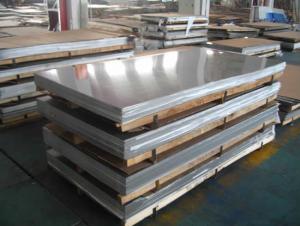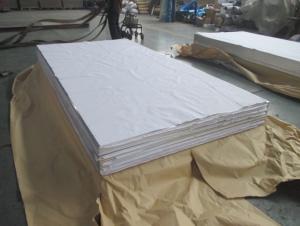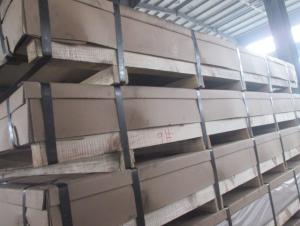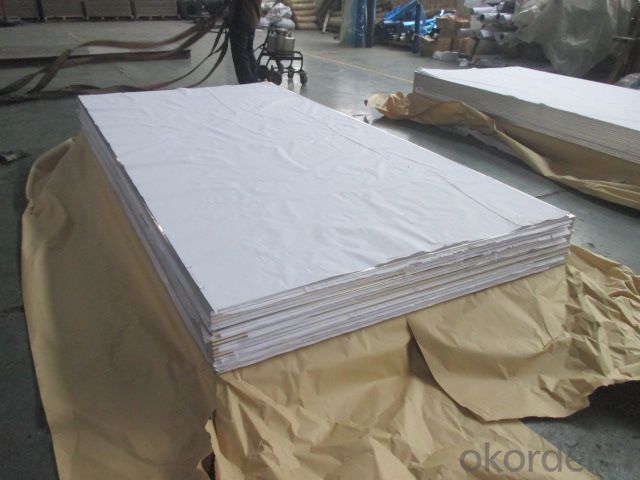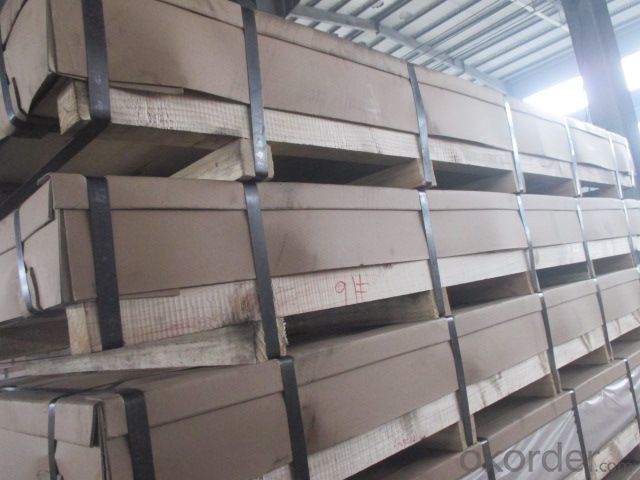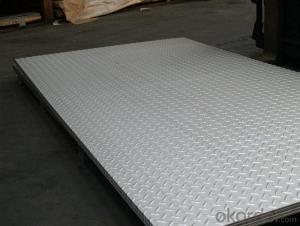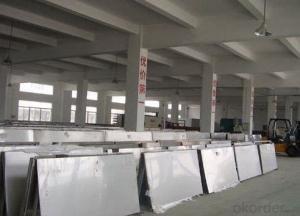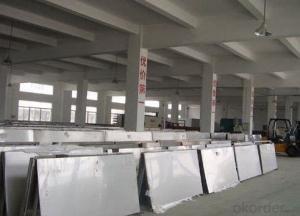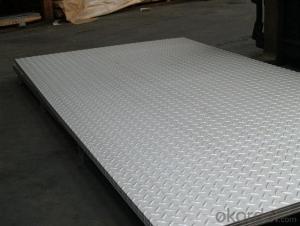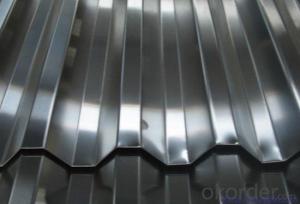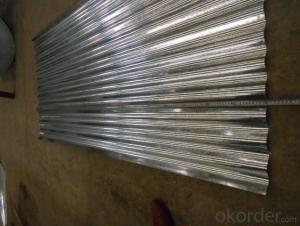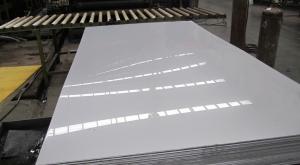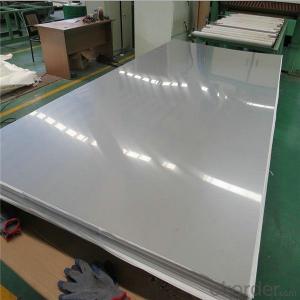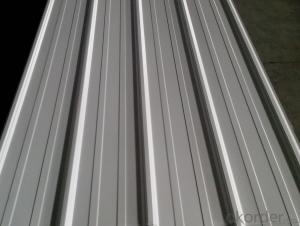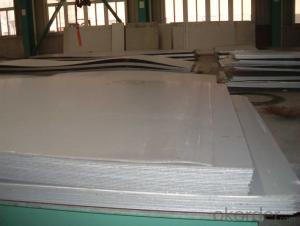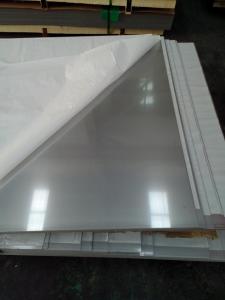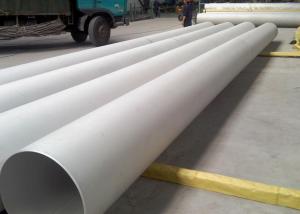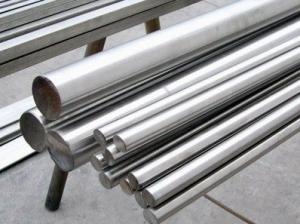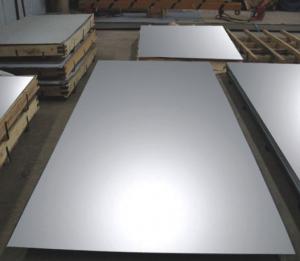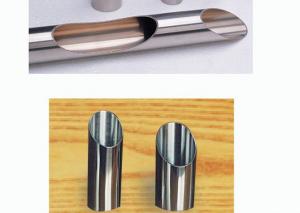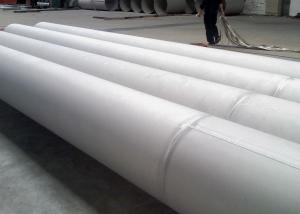Stainless Steel Sheet In Cheapest Price Stocks
- Loading Port:
- Shanghai
- Payment Terms:
- TT or LC
- Min Order Qty:
- 4 kg
- Supply Capability:
- 2000 kg/month
OKorder Service Pledge
OKorder Financial Service
You Might Also Like
1.Structure of Product Description
Cold rolled aluminum sheet is widely used in the field of construction field and decoration field, etc.
There are many different grad and alloy number and else graes are in the fields ,
ades, such as: 1000 series, 2000 series, 3000 series, 5052,5754,5083,6061,6063,8011, etc.
The temper is include H14, H22, H24, H44,H112,H114,etc.
2. Main features of the product
a.Competitive price
b.Frist-Class Service.
c. Shortest service.
3. Image.
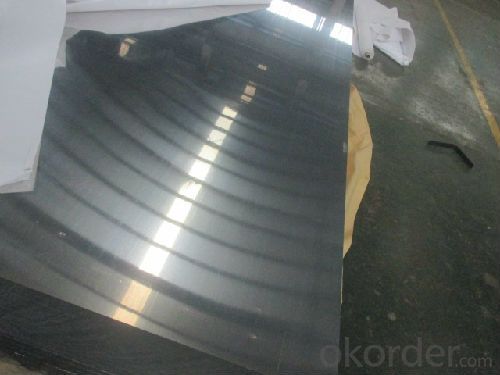
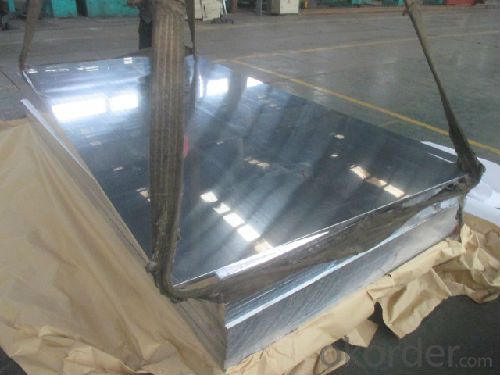
4. Product detailed sizes:
1000mm*2000mm, 1219mm*24381220mm*2440mm,
800*800,700*700,900*900,
1250mm*2500mm,1500mm*3000mm, etc.
5. FAQ:
What is the quality standard?
---Usually our standard is GB3880-2006 or others.
What is the width range?
---It is from 100 to 2500mm, etc.
---Normally it is around 9000 tons totally.
Where is your client from?
---Normally it is from Japan, USA, ENGLISH, SINGAPORE, ETC.
What is your mainly products?
---Normally they are aluminum sheet, checkered sheet, mirror finish aluminium sheet, aluminum casting coil, etc.
- Q: Can stainless steel sheets be used for decorative staircases?
- Indeed, decorative staircases can make use of stainless steel sheets. With its versatility, stainless steel emerges as a highly sought-after material in architectural and interior design domains, offering both aesthetic charm and long-lasting strength. When employed in decorative staircases, stainless steel sheets impart a polished and contemporary feel, elevating the overall allure of the staircase. Moreover, stainless steel's resistance to corrosion and staining renders it perfect for high-traffic zones such as staircases. Not only that, but it also boasts easy cleaning and maintenance, magnifying its appropriateness for ornamental intentions.
- Q: What are the different types of stainless steel sheet surface textures for decorative purposes?
- For decorative purposes, there exist various surface textures for stainless steel sheets. These textures serve to enhance the overall aesthetic appeal of the stainless steel sheet and make it suitable for a variety of applications. Here are some examples of the different types of surface textures available: 1. Brushed Finish: This texture is achieved by rubbing the stainless steel sheet surface with a fine abrasive material, resulting in a smooth and subtle appearance similar to satin. The brushed finish is popular for its pleasing texture, making it suitable for various decorative applications. 2. Mirror Finish: Also known as a highly reflective finish, the mirror finish is achieved by polishing the stainless steel sheet surface to a high gloss. This texture creates a mirror-like reflection and is often used in decorative applications where a sleek and modern appearance is desired. 3. Bead Blast Finish: This texture is created by blasting the stainless steel sheet surface with small glass beads, resulting in a matte and textured appearance. The bead blast finish is commonly used in decorative applications where a non-reflective and textured surface is desired. 4. Embossed Finish: This texture involves creating patterns or designs on the stainless steel sheet surface by stamping or pressing it with a patterned roller or plate. Embossed finishes can vary in pattern and depth, adding a visually appealing and tactile element to the stainless steel sheet. 5. Etched Finish: This texture is achieved by chemically etching the stainless steel sheet surface with an acid or other corrosive substances. Etched finishes can create various designs, patterns, or even images on the surface, making it ideal for decorative applications where intricate detailing is required. 6. Hairline Finish: This texture is created by mechanically polishing the stainless steel sheet surface with fine abrasive belts or brushes, resulting in a narrow and uniform textured pattern. Hairline finishes are commonly used in decorative applications where a subtle and elegant appearance is desired. These examples represent only a fraction of the numerous stainless steel sheet surface textures available for decorative purposes. Each texture offers a distinct visual and tactile quality, providing a wide range of design options when utilizing stainless steel sheets for decorative applications.
- Q: Are stainless steel sheets suitable for industrial applications?
- Stainless steel sheets are perfect for industrial use due to their high suitability. This material is incredibly durable and versatile, providing numerous advantages in industrial settings. Firstly, stainless steel possesses a remarkable resistance to corrosion, making it the ideal choice for industries exposed to moisture, chemicals, or corrosive substances. Moreover, it maintains its strength and structural integrity when subjected to extreme temperatures, whether high or low. In addition, stainless steel boasts exceptional hygienic properties, making it highly suitable for industries like food processing, pharmaceuticals, and medical equipment. Furthermore, stainless steel sheets are renowned for their outstanding strength-to-weight ratio, making them perfect for structural applications in industries such as construction, automotive, and aerospace. They can be easily formed, welded, and fabricated to meet specific requirements. Overall, stainless steel sheets combine strength, durability, corrosion resistance, and versatility, rendering them highly appropriate for a wide range of industrial applications.
- Q: What are the color options for stainless steel sheets?
- The color options for stainless steel sheets are typically limited to the natural silver-gray hue of stainless steel itself. However, certain surface treatments and coatings can be applied to stainless steel sheets to create different colors such as black, gold, bronze, and even vibrant shades like blue and red.
- Q: Do stainless steel sheets have a specific weight?
- Yes, stainless steel sheets have a specific weight. The weight of a stainless steel sheet depends on its dimensions, thickness, and density of the stainless steel material. Stainless steel is typically denser than other metals, which means it will weigh more for the same volume. The weight of a stainless steel sheet can be calculated by multiplying its volume by its density. The specific weight of stainless steel is usually expressed in pounds per square foot or kilograms per square meter.
- Q: Are stainless steel sheets suitable for electrical applications?
- Yes, stainless steel sheets are suitable for electrical applications. Stainless steel is a highly conductive material and is resistant to corrosion, making it an ideal choice for various electrical components and equipment. Additionally, stainless steel sheets provide durability and excellent mechanical properties, ensuring long-lasting performance in electrical applications.
- Q: What are the different types of mirror finishes available for stainless steel sheets?
- There are several types of mirror finishes available for stainless steel sheets, including #8 mirror, 2B mirror, and 4 mirror.
- Q: How do I prevent stress relaxation on stainless steel sheets?
- Stress relaxation is a phenomenon that occurs in stainless steel sheets when they are subjected to prolonged exposure to high temperatures or constant stress. To prevent stress relaxation on stainless steel sheets, you can take the following measures: 1. Proper selection of stainless steel grade: Different grades of stainless steel have varying resistance to stress relaxation. Choose a grade that offers high resistance to this phenomenon, such as austenitic stainless steels like Type 304 or Type 316. 2. Avoid excessive temperatures: Stainless steel sheets should be operated within their recommended temperature limits. Exposing them to temperatures beyond their specified range can accelerate stress relaxation. Ensure that the operating temperature remains within the permissible limits. 3. Control the stress levels: Minimize the stress levels applied to the stainless steel sheets during fabrication and installation. Avoid excessive bending, stretching, or deformation that could introduce stress into the material. Properly design and fabricate the components to reduce stress concentration points. 4. Post-weld heat treatment: If the stainless steel sheets are welded, consider performing a post-weld heat treatment. This process involves subjecting the welded area to controlled heating and cooling cycles to relieve residual stresses and minimize the potential for stress relaxation. 5. Reduce exposure to aggressive environments: Stainless steel sheets are corrosion-resistant, but exposure to aggressive chemicals or environments can accelerate stress relaxation. Avoid prolonged exposure to corrosive substances or environments that may compromise the material's integrity and cause stress relaxation. 6. Regular inspections and maintenance: Periodically inspect the stainless steel sheets for signs of stress relaxation, such as deformation, cracks, or changes in dimensions. Regular maintenance and timely repairs can help identify and address any issues before they worsen. 7. Consult with experts: If you are unsure about the specific requirements to prevent stress relaxation in your stainless steel sheets, consult with metallurgical experts or stainless steel manufacturers. They can provide guidance on the best practices and materials to ensure long-term performance and prevent stress relaxation. By implementing these preventive measures, you can significantly reduce the risk of stress relaxation in stainless steel sheets, ensuring their durability and maintaining their structural integrity over time.
- Q: What are the different types of stainless steel sheets available?
- When considering stainless steel sheets for your project or application, it is crucial to take into account the specific requirements, as there are several varieties available in the market, each with its own unique properties and applications. Here are some of the most common types: 1. Austenitic Stainless Steel Sheets: Widely used and highly popular, this type of stainless steel offers exceptional corrosion resistance, high strength, and good formability. It finds extensive usage in kitchen equipment, food processing plants, and pharmaceutical industries. 2. Ferritic Stainless Steel Sheets: Distinguished by a higher chromium content and lower carbon content in comparison to austenitic stainless steel, ferritic sheets are renowned for their outstanding stress corrosion cracking resistance. They are commonly utilized in automotive applications, architectural structures, and appliances. 3. Martensitic Stainless Steel Sheets: Boasting a higher carbon content than other types, martensitic sheets provide exceptional strength and hardness. They are frequently employed in applications requiring wear resistance, such as cutlery, surgical instruments, and turbine blades. 4. Duplex Stainless Steel Sheets: These sheets possess a mixed microstructure of austenite and ferrite, offering a combination of high strength and excellent corrosion resistance. They often find application in chemical processing plants, oil and gas industries, and marine environments. 5. Precipitation Hardening Stainless Steel Sheets: Heat-treatable and known for their high strength and corrosion resistance, precipitation hardening sheets are commonly found in aerospace applications, defense equipment, and high-performance industries. Considering the unique properties and advantages of each type, it is crucial to carefully evaluate the specific requirements of your project or application when selecting the appropriate stainless steel sheet.
- Q: Are stainless steel sheets easy to install?
- Yes, stainless steel sheets are relatively easy to install. They usually come in standard sizes and can be easily cut to fit specific dimensions if needed. Stainless steel sheets are lightweight and can be easily handled, making the installation process more convenient. Additionally, they often come with pre-drilled holes, which allows for easy attachment to various surfaces. With proper tools and basic knowledge of installation techniques, stainless steel sheets can be installed in a straightforward manner.
Send your message to us
Stainless Steel Sheet In Cheapest Price Stocks
- Loading Port:
- Shanghai
- Payment Terms:
- TT or LC
- Min Order Qty:
- 4 kg
- Supply Capability:
- 2000 kg/month
OKorder Service Pledge
OKorder Financial Service
Similar products
Hot products
Hot Searches
Related keywords
